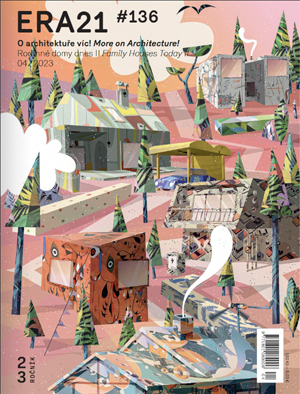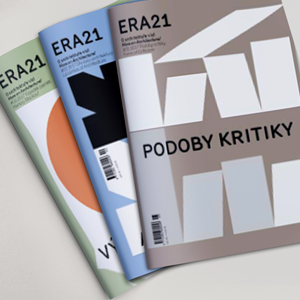| editorial |
A Reshaped Country » entire article |
|
| news | ||
| reviews | ||
| intro |
Political Economy of Landscape » Production, distribution and consumption is defined by social-spatial organization. Space as such is social to the same extent as to which it is produced, distributed and consumed. National economies are classified into economic sectors for strategic and statistical reasons. Rather than ambiguous social relations, the arbitrary character of work starts to be in the spotlight. This also happens within the artistic depiction of a landscape as an independent artistic genre where the effort to reveal landscape character precedes the question of the social production of landscape. On one hand, the presented photographs loosely based on the sector classification of economic activities, interrogate how living labour, classified as this or that economic activity, perceives and co-produces landscape as its working environment. On the other hand, the photographs self-critically explore the limits of understanding of social relations through the photographic representation of a landscape. |
|
| methodology |
Reclamation Methodology of Post-mining Areas » In 2007—2011, a project of the Czech Ministry of Environment called Reclamation and Management of Non-Natural Biotopes took place in the Czech Republic, investigating geological and biological conditions and changes of eighty four sites in the state. One of the results was a document called Industrial Landscape and Its Natural Restoration. Legal grounds and reclamation methodology of post-mining areas focused on so-called non-natural biotopes, i.e. territories significantly destroyed by human activity. The methodology intended for representatives of mining companies and employees of the corresponding state authorities defines the basic framework, terms, and processes in the remediation and reclamation of these areas. |
|
| enquiry |
Changes of the Czech Post-Landscape » Man changes the character of the landscape as a result of using it. Landscape renewal is a protracted and expensive process, always requiring the participation of many professions whose opinions quite often differ. On the one side, there are defenders of biotechnical reclamation forms, on the other side, there are advocates for natural, nature-friendly procedures. How can an architect contribute to the whole process? |
|
| practice |
Ten Years of Radical Change and Fresh Departures. A Look Back at the IBA Fürst-Pückler-Land » In Lusatia millions of cubic metres of soil are being moved within the framework of lignite extraction and redevelopment. Where the energy center of the former GDR once used to be, you will find Europe's largest landscape construction site today. In this region mountains are being moved and new lakes created. Part of this process of change are industrial buildings, mining equipment, company towns and large-area industrial sites for which new perspectives are to be found. The ideological and organizational platform IBA Fürst-Pückler-Land playd an essential role in this transformation. |
|
| completed project |
4Courts Park in České Budějovice » An urban park, built on the site of a former military area between the housing estates Máj and Vltava, completes the missing public facilities of the adjacent housing estates. After cleaning the area and the demolition of inconvenient objects, a net of inner communications and cycling paths was realized there as well as playgrounds, areas for games intended for different age groups and different kinds of activities. There is also a café in the park. Considering the geological conditions of the site (the clay content of the soil), a principal of controlled succession was chosen as the leading concept for working with the vegetation. |
|
| completed project |
Tagus Linear Park » The industrial private sector has been hindering the inhabitants of the Portuguese town of Póvoa de Santa Iria and the surrounding municipalities for a long time from a direct contact with the riverfront. The transformation of the area into a public urban area respects its original essence; it is based on the natural and cultural features of the landscape, it preserves and protects the existing natural ecosystems and promotes the ecological regeneration of damaged areas. The new recreational zone offers a varied range of recreational and leisure equipment and activities: from sports, fishing, walking and cycling to environmental education or simply getting a view of the landscape. |
|
| completed project |
Adaptation of Festival Stage in Sankt Margarethen Quarry » A closed limestone quarry in East Austria has been serving as a stage for folk Passion Plays since the early 1960’s. In 1996, a summer opera festival was added to the plays whose growing popularity and number of visitors required an extension and improvement of the facilities both for the viewers and performers. The point of this adaption was to use the unique character of the site and monumentality of the environment for all phases of theatre production. The thorough material and spatial solution of each building and structure continues in the two-thousand-year history of local mining. |
|
| completed project |
Waste Treatment Facility from Vallès Occidental in Vacarisses » The Waste Treatment Facility is located on a hill overlooking the Coll Cardús massif in Vacarisses near Barcelona. When choosing the right location, the selection was made on the edge of a dump whose capacity was nearly full and it needed to find a new use. The placing of the facility was favored on the one hand by economic and logistic criteria and on the other on the minimization of waste treatment impact on the environment: the original topography and natural environment was already destroyed by the dump and the new building therefore doesn’t strain the so far intact locality. Despite the size of the whole facility, the aim was to integrate it as much as possible into its surroundings through a spatial solution suppressing the effects of roof and façade after the planned landscape reclamation. |
|
| project |
Emporium Logistics Center » According to the last Report on the Environment, the built up area in the Czech Republic was extended by 2.9 thousand hectares in 2013. The required arable land thus already held 10.6 % of the state’s territory. This alarming phenomenon is mainly caused by the construction of logistic centers. The Emporium project presents new urban typology removing storage buildings from the Czech landscape. It concentrates storage into one logistics complex situated on the site of the Bílina lignite mine. The inserted storage structure helps to reclaim damaged post-mining areas, it implements infrastructure into the exhausted localities, and revives the stagnating economy of the north-bohemian region. |
|
| workshop |
Sudetes Landscape—Post-cultural Landscape? » The conceptual landscape competition in the village of Výškovice near Chodová Planá is part of the project “The recovering of Czech-German border landscape” within the campaign “Pilsen—European Capital of Culture 2015”. It was declared to be open, in order to start an international discussion concerning the problem of disappearing cultural landscape. The competition, which took place in the spring of 2014, was followed by a workshop in the summer of 2014, with the parcitipation of five selected teams, followed by the realization of two winning proposals. The most recent outcome was a conference and a vernissage of land-art works prepared by winning teams from the Czech Republic and Germany, which took place in Výškovice during May 2015. |
|
| idea |
Pilgrimage Church in Doupovské hory » A stirred past is what makes Doupovské hory a place with special symbolic meaning both for both Czechs and Germans. The project of the Pilgrimage Church brings an opportunity to deal with a traumatic past—by changing the whole area into a symbolic spiritual landscape in which a certain spiritual vision is made visible through an elaborate intervention. That is embodied by the pilgrimage church situated in the center of a former settlement defining the destination of the pilgrimage. The design of the church restores the idea of a sacral building as a collective work: the site and future shape of the walls is given but people themselves make them grow. Pilgrims bring stones, write their wishes or prayers on them, climb the spiral staircase up to the church walls and lay their stones next to the others. The walls will become a gigantic treasury of memories, wishes, and prayers layered by time, religiousness, or just by the interest of those coming here. |
|
| annex |
Czech Pavilion at Expo 2015 in Milan is the First Step Into the World. Ondřej Chybík and Michal Krištof Interviewed by Zuzana Morávková |
|
| trends | ||
| annex |
Errors During the Construction of Pitched Roofs » Constantly repeating damp defects of pitched roofs with roof cladding over heated spaces, whether caused by a design fault or execution, has in most cases one thing in common—a misunderstanding of the function and importance of the separate layers in the roof deck structure. The only guarantee of a good result is a correct and complete design together with a high-quality execution which can be significantly helped by the careful and thorough performance of architectural or engineering supervision. |
|
| annex |
Thermal Insulation Materials Used in the Construction of Buildings According to Sustainability Principles » When applying principles of sustainable development and environmental protection in the design of thermal insulation it is necessary to evaluate not only its thermal resistance and energy efficiency, but also the impact of the used materials and products on the environment within the framework of environmental evaluation. |
|
| annex |
Defects of Residential Objects from a Fire Safety Perspective » According to the statistics of the Fire Rescue Service of the Czech Republic, fires in apartment houses are among the most frequent tragedies. Therefore, it is necessary to pay them due attention. Their cause is often the incorrect execution of building construction disrespecting fire safety aspects. |
|
| completed project |
Castle Riding-School Multifunction Center in Lednice » Horse-stables are located in the western part of the Lednice chateau area, between the former "hunting court" and Podivín road. Once a three-wing stables with riding schools adjoining the western part of the chateau, with whom they had previously been operationally connected. The ancient farm building underwent structural renovation and was transformed into a center of the entire Lednice-Valtice Cultural Landscape, including an information center, auditorium, exhibition and educational center. |
|
| completed project |
The ArtGen Administrative Complex in Praha-Holešovice » The complex is located north of the Holešovice market hall and it consists of two buildings, separated by a public resting area. The eastern object is shaped as a traditional rectangular composition, consisting of a base and three towers. The west one is of a considerably dynamic form, using a trapezoidal floorplan and an organic-shaped mass, which culminate in a round southwestern corner. The movement impression is supported by a facade division of both buildings. |


ERA21 vydává ERA Média, s. r. o. |
|
|
Phone: +420 530 500 801 E-mail: redakce@era21.cz |
|
| WEBdesign Kangaroo group, a.s. |